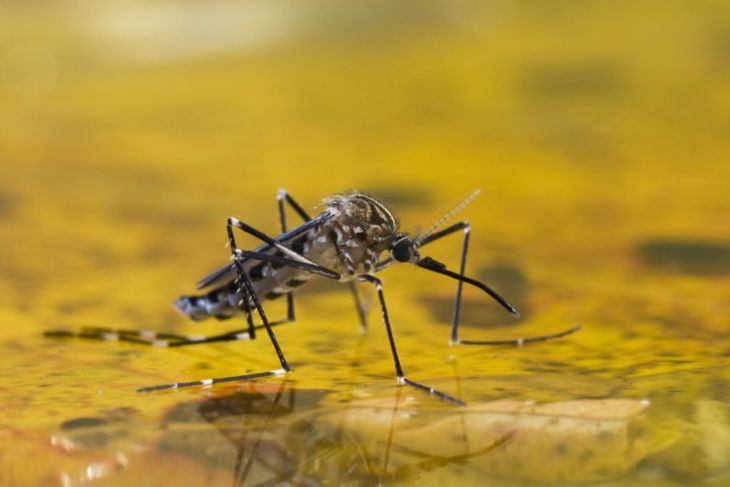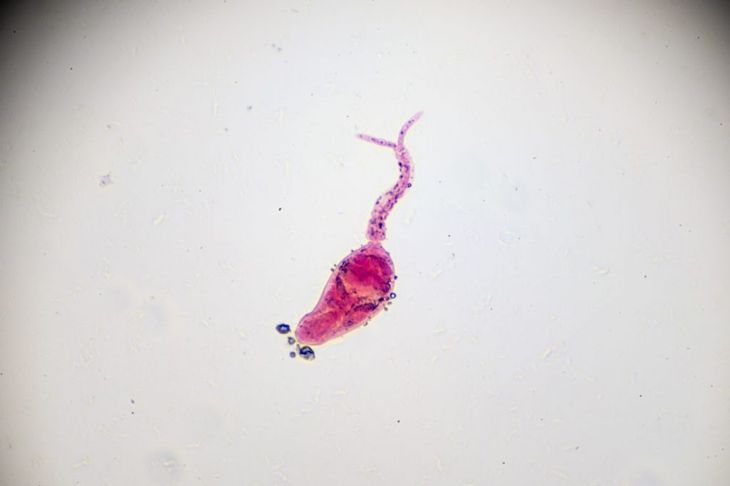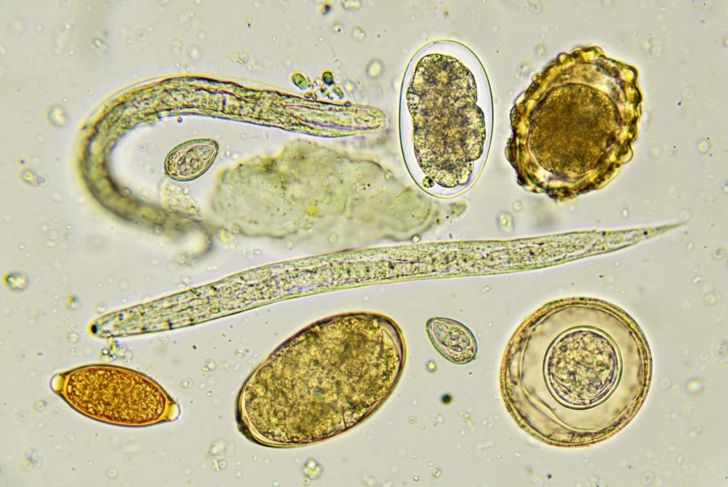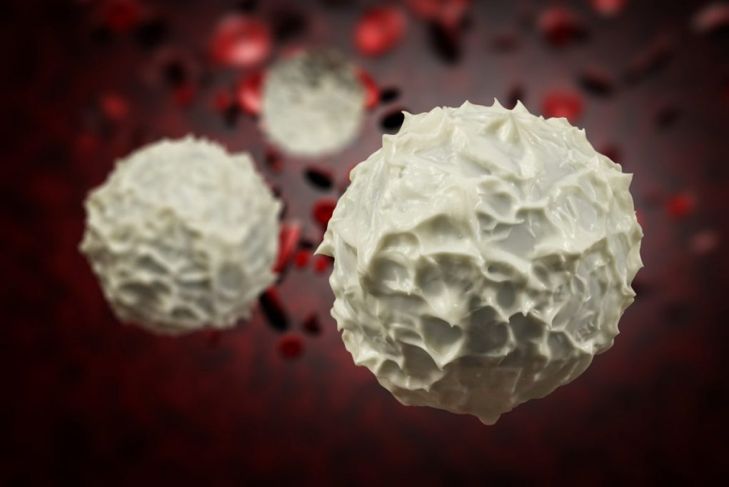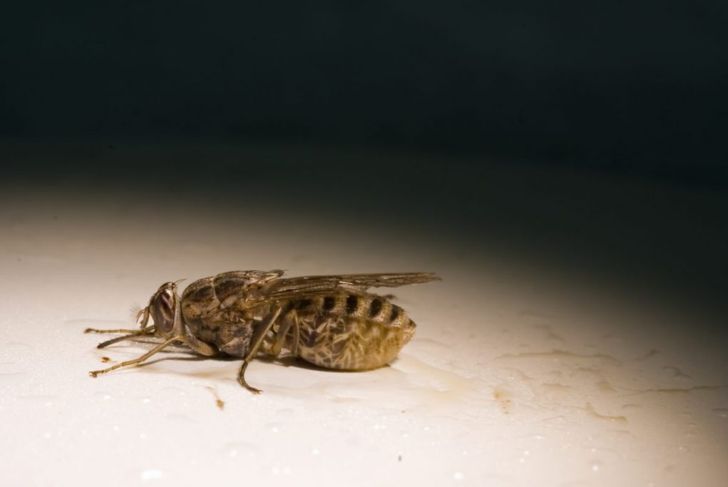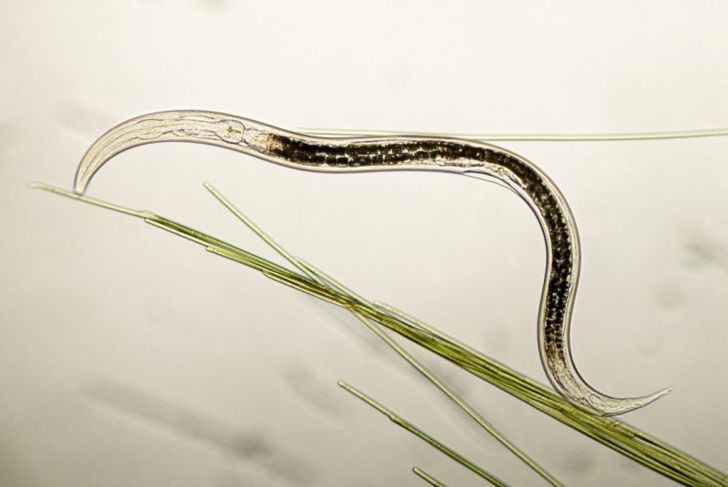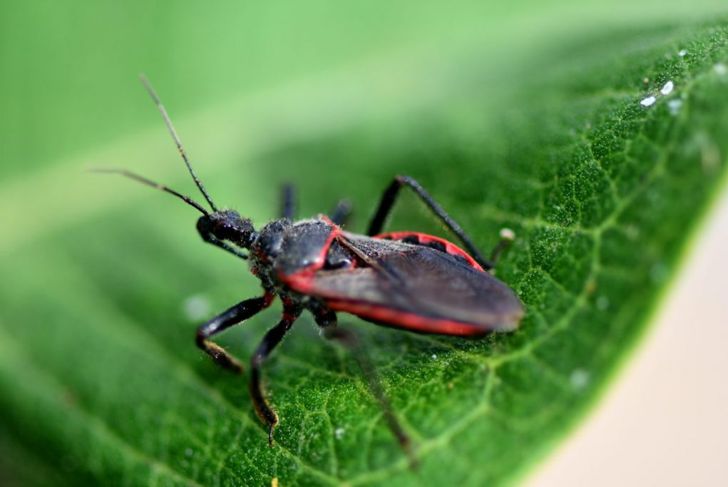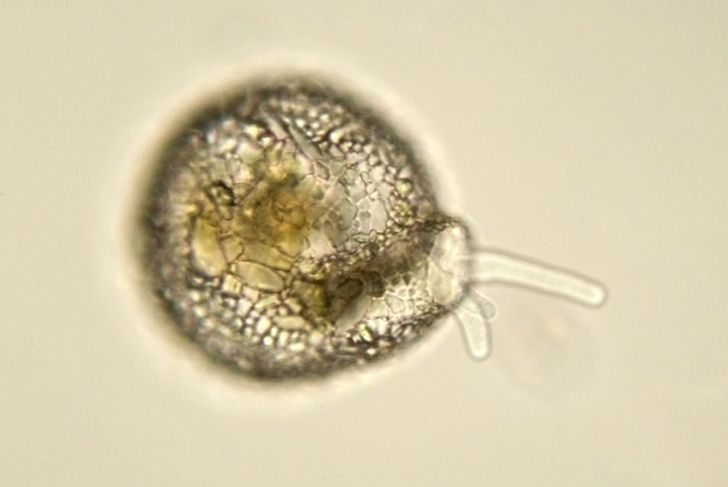A parasitic infection occurs following the invasion of a parasite, an organism that lives and thrives on or inside a host organism. The parasite often survives at the expense of the host. The most common transmission methods for parasites are blood, feces, contaminated food and water, and insects. The prevalence and prognosis of parasitic infections vary by type and depends on several factors, including geographical region and access to adequate medical care.
Malaria
Experts believe more than 200 million people have malaria. The Plasmodium parasite, protozoa, is transmitted through the blood by the bite of an infected mosquito. The vast majority of cases of malaria exist in sub-Saharan Africa. Malaria presents with fever and chills and, if not treated, can lead to anemia, cerebral malaria, organ failure, and death.
Schistosomiasis
The Schistosoma parasite, a helminth, is transmitted through human waste. These parasitic worms or schistosomes are acquired through contact with water contaminated by urine and feces. Nearly 260 million people are infected with schistosomiasis worldwide. The parasitic infection is widespread, affecting people in Africa, South America, the Caribbean, China, and the Middle East. Symptoms progress from an itchy rash, to malnutrition and anemia, to organ failure.
Soil-Transmitted Helminths
Soil-transmitted helminths, including roundworms, whipworms, hookworms, and the Strongyloides sterecoralis parasite, are transmitted through soil contaminated by feces. Nearly 1.5 billion individuals are infected by these parasitic worms, with prevalence highest in sub-Saharan Africa, East Asia, and the Americas. Infection may lead to gastrointestinal symptoms, malnutrition, stunted growth and development, and bowel obstruction.
Leishmaniasis
Leishmaniasis occurs through the transmission of Leishmania protozoa via the bite of a sand fly. Around 1 million people a year come into contact with this parasite, primarily in tropical and subtropical regions. The parasite infects a type of white blood cell in the body and can occur cutaneously or viscerally. Cutaneous leishmaniasis results in skin sores while the visceral infection leads to organ damage and, if left untreated, death.
African trypanosomiasis
African trypanosomiasis, more commonly referred to as sleeping sickness, affects around 300,000 people in sub-Saharan Africa each year. The bite of a tsetse fly carrying Trypanosoma brucei protozoa transmits the infection, which first presents with relatively minor symptoms, including fever, headaches, and joint pain. Upon infection of the central nervous system, individuals begin to experience neurological and sleep disturbances. Untreated, African trypanosomiasis can be fatal.
Lymphatic filariasis
Lymphatic filariasis infects around 120 million people worldwide. Known also as elephantiasis, one of three parasitic nematode helminths or roundworms causes the infection. Mosquito bites transmit lymphatic filariasis, which then travels into the lymphatic vessels. The asymptomatic form damages the kidneys, the lymphatic system, and the immune system, while the chronic form results in disfiguring lymphoedema and elephantiasis.
Onchoceriasis
Onchoceriasis spreads through the bite of a black fly infected by Onchocerca volvulus, a parasitic worm. An estimated 25 million people have this parasite, with the rate of prevalence highest in 30 African countries, Yemen, and parts of Venezuela and Brazil. Symptoms may include skin nodules, rashes, and lesions on the eye. Infected individuals are at high risk for blindness. Because of this, and because the black flies that transmit the infection breed in rivers, the infection is known also as river blindness. Over a million people worldwide have some degree of visual impairment due to this parasitic infection.
American trypanosomiasis
Similar to African trypanosomiasis, American trypanosomiasis arises from a trypanosoma parasite, Trypanosomacruzi. Known also as Chagas disease, the infection affects eight million people in the Americas, primarily rural regions of Central and South America. Cases of Chagas disease do occur, however, in urban areas and the United States. The disease usually spreads through infected triatomine insects or kissing bugs; the insects bite and then defecate on the skin, transmitting the infection into the body. Acute phase symptoms include fever, body aches, diarrhea, vomiting, and swelling in the affected area. The infection can progress into chronic complications affecting the cardiac and gastrointestinal systems.
Amebiasis
The Entamoeba histolytica parasite causes amebiasis, which individuals contract through contact with contaminated water and food. The parasite infects 30 to 50 million people each year in Asia, Africa, and Latin America. The most common symptoms of amebiasis are stomach discomfort and diarrhea and, in more severe cases, dysentery. The infection can also cause liver abscesses.
Giardiasis
Giardiasis is one of the most common parasites worldwide, and the most common intestinal parasitic infection in the United States. An estimated 33% of people in developing countries have contracted the infection, as well as 2% of adults and around 7% of children in developed countries. Individuals acquire giardiasis by consuming food or water contaminated with the Giardia intestinalis parasite. One of the most common methods of transmission is coming into contacting with a surface or person carrying the parasite and unknowingly swallowing it. Symptoms of giardiasis include a variety of gastrointestinal disturbances including diarrhea, bloating, stomach pain, and nausea.

 Home
Home Health
Health Diet & Nutrition
Diet & Nutrition Living Well
Living Well More
More